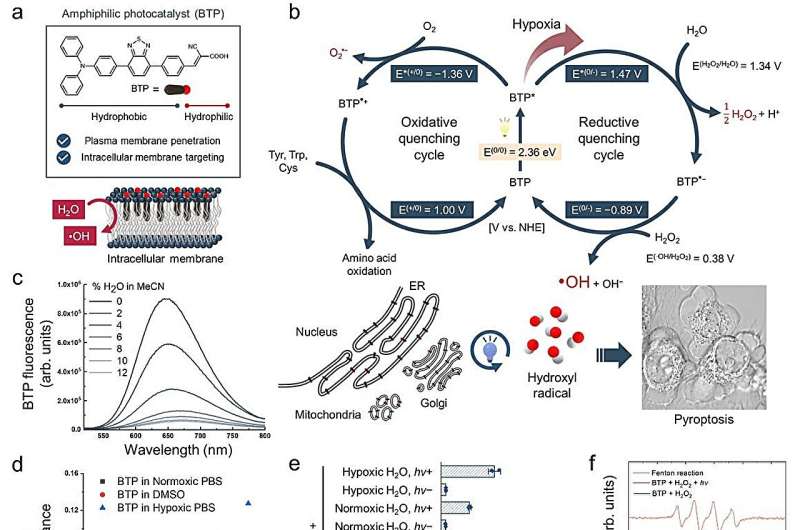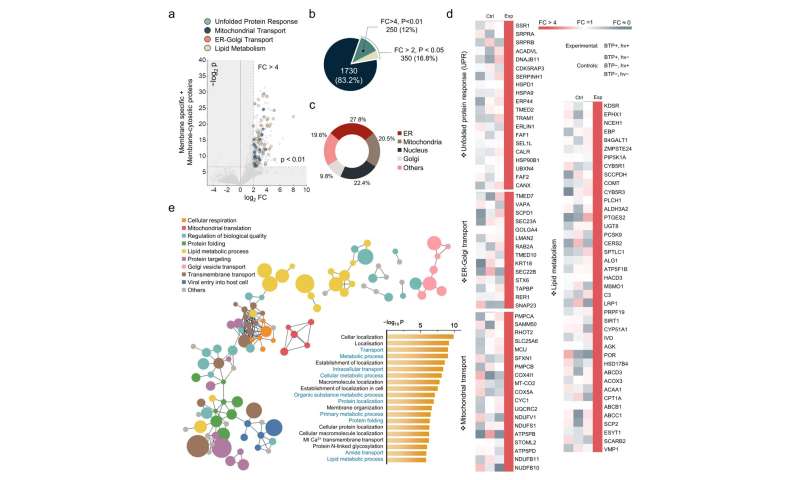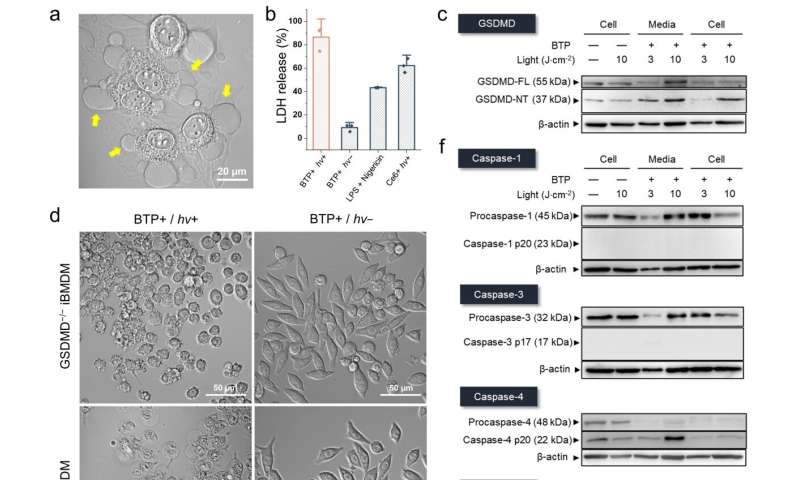This article has been reviewed according to Science X's editorial process and policies. Editors have highlighted the following attributes while ensuring the content's credibility:
fact-checked
peer-reviewed publication
trusted source
proofread
New approach uses oxidative photocatalysis on membranes to trigger cell death in cancer cells

A research team, led by Professors Tae-Hyuk Kwon and Duyoung Min from the Department of Chemistry at UNIST, has achieved a significant breakthrough in the battle against cancer through the utilization of reactive oxygen species (ROS) generated via water oxidation.
In this innovative approach, photosensitizers are employed to produce ROS, which in turn target and oxidize membrane proteins within cancer cells, ultimately leading to their demise.
The study is published in the journal Nature Communications.
Throughout their study, the research team identified an amphiphilic photocatalyst that localizes in intracellular membranes to induce oxidative damage to membrane proteins, triggering a form of cell death, known as non-canonical pyroptosis.
Unlike the well-known programmed cell death pathway of apoptosis, pyroptosis induces a vigorous inflammatory response and prompts an adaptive immune reaction.
-

Functional implication of oxidized membrane proteins by BTP photocatalysis. Credit: Nature Communications (2024). DOI: 10.1038/s41467-024-47634-5 -

Caspase-4/5-mediated pyroptosis by oxidative photocatalysis on membranes. Credit: Nature Communications (2024). DOI: 10.1038/s41467-024-47634-5
Professor Min highlighted the detrimental effects of protein oxidation on cell membranes, stressing its crucial role in the induction of pyroptosis. This treatment induces an overload on the endoplasmic reticulum within the cell, consequently causing cell death.
Lead author Chaiheon Lee emphasized the importance of this discovery in the field of cancer treatment, particularly in challenging hypoxic environments where traditional therapies often fall short. The outcomes of the study have opened up new avenues for solid cancer immunotherapy and the management of various immune-related disorders.
Co-author Mingyu Park highlighted the synergistic potential of this novel treatment approach with immunotherapy, particularly in overcoming the limitations of existing medications in hypoxic conditions.
This study has garnered support from various organizations and has led to preclinical experiments conducted by UNIST-affiliated tech startup, O₂MEDI Inc. Encouraging results from these experiments, including successful tumor elimination in animal models of pancreatic cancer, have laid the groundwork for potential future applications in cancer therapy.
More information: Chaiheon Lee et al, Oxidative photocatalysis on membranes triggers non-canonical pyroptosis, Nature Communications (2024). DOI: 10.1038/s41467-024-47634-5



















